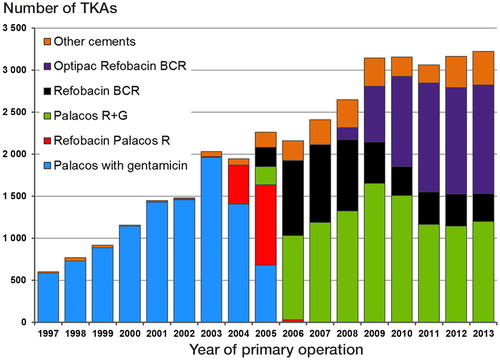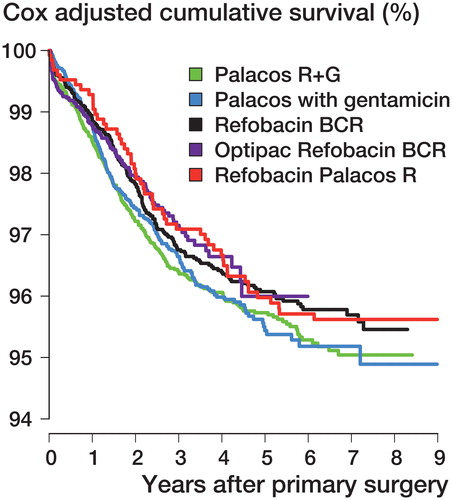Figures & data
Figure 1. Bone cements used for TKAs in Norway in the period 1997–2013. TKAs with patellar component, unknown diagnosis, fixation without antibiotic-loaded bone cement, and hybrid fixation (or unequal bone cement in distal and proximal part) are not included.

Figure 2. The selection procedure from the data registered in the NAR. n = number of knees with TKA. a Illustrated in Figure 1.b The time period of use included in study.

Table 1. Inclusion criteria for bone cements and prostheses with product information
Table 2. Patient and procedure characteristics for the different bone cement products
Figure 3. Cox survival curves with cement product as stratification variable for all TKAs with revision for any reason as endpoint. The curves were estimated with adjustment for age, sex, diagnosis, and prosthesis brand.

Table 3. Cox relative revision risk (RR) estimates with revision for any reason as endpoint. Unadjusted and adjusted for age, sex, diagnosis, and prosthesis brand
Figure 4. Cox survival curves with cement product as stratification variable for TKAs with revision due to deep infection within one year postoperatively as endpoint. The curves were estimated with adjustment for age, sex, diagnosis, and prosthesis brand.

Table 4. Cox relative revision risk (RR) estimates with revision due to deep infection within 1 year postoperatively as endpoint. Adjusted for age, sex, diagnosis, and prosthesis brand
